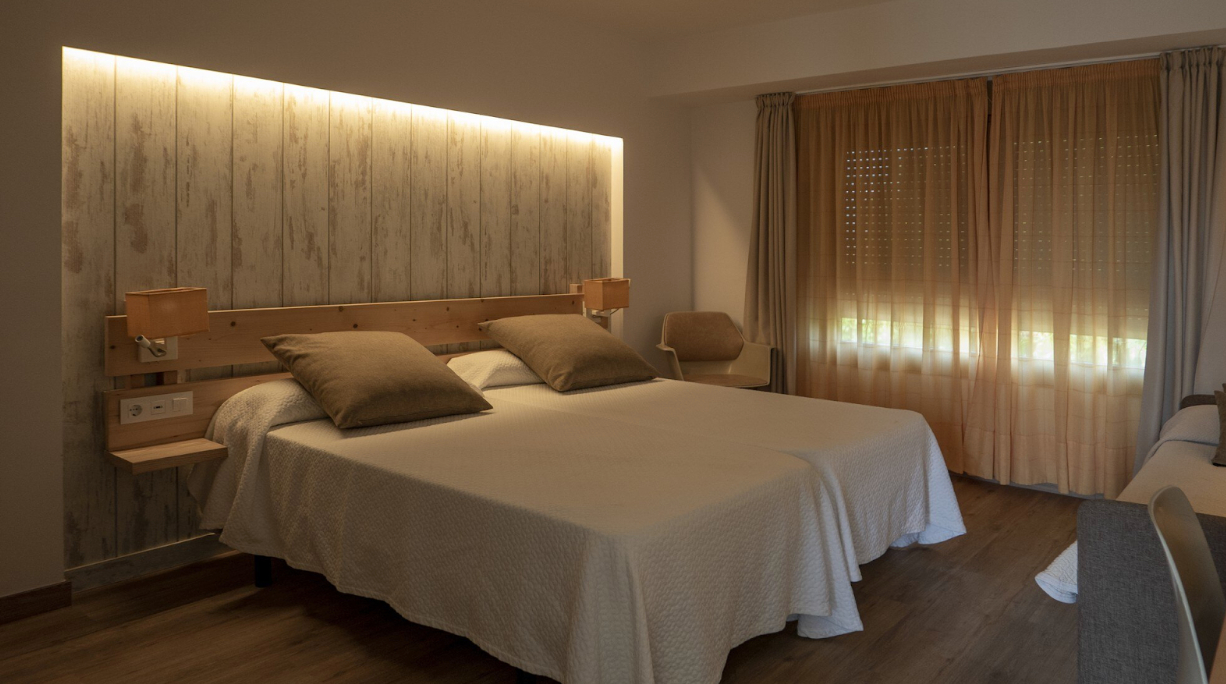
Enhancing Sleep and Serenity: Benefits of Smart Lighting in Bedrooms
The bedroom should serve as a peaceful sanctuary that easily allows you to sleep without stress. A basic lighting arrangement in your room might be the unknown factor that disrupts your sleep quality.
People now experience an intelligent lighting era beyond visibility since modern lighting systems improve health together with mood and sleep quality. Smart lighting systems have changed the perception of bedroom environments through their ability to set scenes for relaxation and their compatibility with bio-mechanical circadian rhythms.
Shifting to smart lighting systems enables you to build a relaxing refuge and enhance sleep quality together with bleeding-edge aesthetics for your personal living area.
What Is Smart Lighting, Really?
Modern lighting systems operate as smart lighting because they let you manage illumination through smartphone applications and voice assistants such as Siri and Google Assistant or sensor-sensitive devices. Smart lighting controls extend past basic functions of on/off control.
Smart lighting allows you to:
- Adjust brightness and color temperature
- Set schedules based on your routine
- Create scenes or moods (like reading, sleeping, relaxing)
- Automate sunrise and sunset simulations
- Use motion or voice control for convenience
In the bedroom, this flexibility translates into a more comfortable, health-aligned experience.
The Science: How Light Impacts Your Sleep
The brain functions according to the light patterns of sun-up and sun-down. The internal body clock called circadian rhythm uses light signals to decide moments of alertness and sleepiness. The exposure to blue-rich daylight indicates we should remain awake. The combination of dim light plus warm temperatures indicates it is time to get ready for sleep.
Traditionally-used lighting systems neglect to take human biological needs into account particularly when utilizing bright white bulbs. Enter smart lighting.
Your body’s needs guide smart lighting systems to adjust both brightness and color temperature settings. The lighting system should use energizing day illumination during morning hours alongside warm evening illumination to produce melatonin effects.
The result? Better sleep, more energy during the day, and a calmer you.
1. Smart Lighting Helps You Fall Asleep Faster
Your bedroom transforms into a relaxed amber lighting scheme through a slow process which creates a natural transition between daytime activities and sleep.
The Philips Hue system and Wyze among other devices called LIFX provide several functions including:
- Circadian rhythm scheduling
- Automatic dusk-to-dawn transitions
- Melatonin-friendly amber or red hues
By mimicking sunset, these lights encourage your body to naturally release melatonin—the sleep hormone. That means fewer sleep delays and less tossing and turning.
2. Smart Wake-Up Lighting Improves Mornings
Waking up to a loud alarm is jarring and unnatural. Smart lighting systems solve this with sunrise simulation.
Here’s how it works:
- 30 minutes before your alarm, your smart lights gradually brighten.
- The shift mimics natural morning light, gently nudging your body out of sleep.
- The transition helps reduce grogginess (aka “sleep inertia”).
You’ll wake up feeling refreshed and alert—no caffeine required.
3. Personalized Ambiance for Every Mood
Your bedroom isn’t just for sleeping. You might use it for:
- Reading before bed
- Meditating or stretching
- Watching a movie
- Getting ready in the morning
Smart lighting helps you create the perfect environment for each task.
Scene Settings You Can Try:
- “Reading Mode”: Bright white light to reduce eye strain.
- “Movie Time”: Dimmed, warm light for cinematic vibes.
- “Relaxation”: Soft purples, ambers, or blues to calm the nervous system.
- “Energize”: Cool, crisp light to get you moving in the morning.
All of these can be set with a tap or a voice command like, “Alexa, set bedroom to relax mode.”
4. Voice & App Control: Convenience at Your Fingertips
Ever gotten cozy in bed and realized you left the light on? With smart lighting, you don’t need to get up.
Benefits include:
- Voice commands: “Hey Google, turn off the lights.”
- Remote control: Adjust lighting from your phone—even if you’re not home.
- Motion sensors: Lights turn off automatically when you leave the room.
- Geofencing: Your lights can turn off when you leave the house and turn on as you arrive.
This isn’t just cool—it’s also energy-efficient and sleep-friendly.
5. Improve Mental Well-being
Lighting directly affects our mood. Repeated exposure to bright white illumination leads to periods of eye strain and headaches with possible development of anxiety issues. Smooth, tender illumination in the space helps people experience less tension while also communicating that it is time to unwind.
With smart lighting, you’re in full control of your bedroom’s mood:
- Dim the lights to signal winding down.
- Use colors to create a peaceful aura—blues for calm, pinks for warmth, and greens for balance.
- Shift light based on seasons or mental needs (e.g., more brightness in winter to combat seasonal affective disorder).
When your lighting works with you, not against you, your bedroom becomes a healing space.
6. Energy Efficiency Without Compromise
Smart lights typically use LED technology, which is up to 80% more efficient than traditional bulbs. Add in features like:
- Dimming
- Motion control
- Scheduling
…and you’ve got a setup that saves power and money without sacrificing comfort.
Some stats:
- LED smart lights last up to 25,000 hours
- They use 70–90% less energy
- Automation ensures lights are only on when you need them
So while the upfront cost may be slightly higher, the long-term savings are worth it.
7. Sleep Tracking & Integration with Health Apps
Some smart lighting systems, like Govee, Philips Hue, and Samsung SmartThings, can integrate with your:
- Sleep tracking apps
- Smartwatches
- Fitness trackers
By syncing your lights with your sleep data, you can:
- Adjust lighting based on actual sleep quality
- Set light-based reminders for bedtime
- Use gradual brightening to wake up at optimal sleep phases
It’s like having a sleep coach right in your bedroom.
8. Design-Forward Aesthetics
Beyond the tech, smart lighting just looks great. Whether it’s:
- Strip lights behind the headboard
- Recessed LED ceiling panels
- Wall sconces with color-changing bulbs
Smart lights give your bedroom a modern, upscale feel without major renovations. You can:
- Change the look of your room without repainting
- Match your lights to your interior decor or mood
- Play with colors, patterns, and automation effects
Its home decor meets innovation.
Choosing the Right Smart Lighting System for Your Bedroom
Here’s a quick breakdown of what to look for:
| Feature | Why It Matters |
| Color Temperature Control | Adjust between warm and cool lighting depending on the time of day |
| Dimming Capability | Allows you to wind down slowly or boost light when needed |
| App & Voice Control | Offers hands-free, effortless usage |
| Scenes and Scheduling | Automate based on your daily routine |
| Sunrise Simulation | Wake up gently with natural-feeling light transitions |
| Energy Efficiency | Look for Energy Star-rated LED systems |
Final Thoughts: Make Your Bedroom Work for You
Smart lighting is more than just a modern convenience—it’s a gateway to better health, deeper sleep, and a more relaxing home environment. In a world full of noise and stress, your bedroom should be your safe space.
So whether you want to sleep better, boost your morning energy, or simply enjoy more control over your surroundings, upgrading to smart bedroom lighting is a game-changer.
It’s not about having a fancy gadget—it’s about investing in your well-being, one peaceful night at a time.

